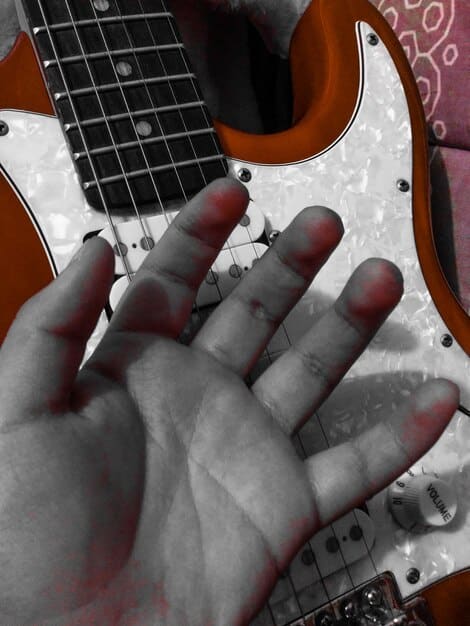Post-Metal Soundscapes: Building Tension and Release Through Atmospheric Layers

Post-metal’s atmospheric landscapes create tension and release through layered instrumentation, dynamic shifts, and incorporation of non-metal elements, distinguishing it from traditional metal subgenres.
Post-Metal’s Atmospheric Landscapes: Building Tension and Release Through Sound is a captivating exploration of how this subgenre utilizes layered soundscapes to create emotional and dynamic experiences. By blending heavy instrumentation with atmospheric elements, post-metal offers a unique sonic journey that transcends traditional metal boundaries.
Understanding Post-Metal: A Genre Defined by Atmosphere
Post-metal stands apart from other metal subgenres due to its emphasis on atmosphere and emotional depth. Rooted in the experimental tendencies of bands like Neurosis and Godflesh, post-metal prioritizes texture and dynamics over conventional song structures.
Instead of focusing solely on aggression and speed, post-metal bands create immersive soundscapes that evoke a range of emotions, from melancholy to awe. Understanding the core principles of this genre is crucial for appreciating its unique approach to musical storytelling.
Key Characteristics of Post-Metal
What truly sets post-metal apart? Let’s delve into the core characteristics that define this atmospheric subgenre:
- Emphasis on Texture: Post-metal bands often utilize layers of sound, incorporating effects like reverb, delay, and distortion to create rich sonic textures.
- Dynamic Shifts: The genre is known for its dramatic shifts in intensity, moving from quiet, introspective passages to crushing, overwhelming crescendos.
- Atmospheric Elements: Post-metal incorporates elements from ambient, drone, and even post-rock, creating a sense of atmosphere and mood.
- Extended Song Lengths: Songs are often longer than typical metal tracks, allowing for gradual development of themes and emotions.
These characteristics combine to create a genre that is both heavy and emotionally resonant, offering a listening experience that is unlike any other in the metal world.
In essence, post-metal uses its atmospheric and dynamic nature to draw listeners into a world of sound, creating a deeply immersive and emotional experience.

Building Tension Through Sonic Density
Sonic density is a cornerstone of post-metal’s ability to build tension. Bands achieve this by layering instruments, incorporating drones, and manipulating frequencies to create a thick, almost overwhelming sound.
This density isn’t just about loudness; it’s about creating a sense of claustrophobia and unease, drawing the listener into the emotional core of the music.
The Role of Drones in Building Tension
Drones play a pivotal role in creating and sustaining tension in post-metal. Here’s how:
- Foundation: Drones provide a foundation upon which other instruments can build, creating a sense of anticipation.
- Hypnotic Effect: The repetitive nature of drones can induce a hypnotic state, making the listener more receptive to the music’s emotional impact.
- Discordance: Drones can be slightly out of tune or dissonant, adding to the overall sense of unease and tension.
By carefully crafting these sonic landscapes, post-metal bands can create a palpable sense of tension that keeps listeners engaged and on edge.
The use of sonic density and drones in post-metal serves not only to create tension but also to enhance the emotional weight of the music, drawing listeners deeper into its atmospheric depths.
The Art of the Crescendo: Reaching the Breaking Point
The crescendo is a defining element of post-metal, serving as the primary mechanism for building tension and ultimately releasing it. These dynamic shifts are meticulously crafted, often spanning several minutes, to create a transformative listening experience.
By slowly increasing intensity, volume, and complexity, bands can evoke a powerful sense of anticipation and catharsis. This carefully orchestrated build-up is what sets post-metal apart from more conventional forms of heavy music.

Techniques for Building Effective Crescendos
Building a truly effective crescendo in post-metal requires careful planning and execution. Here are some common techniques:
- Layering: Gradually adding instruments and vocal layers to increase the richness and complexity of the sound.
- Increasing Tempo: Steadily increasing the tempo to create a sense of urgency.
- Dynamic Range: Utilizing the full dynamic range of the instruments, moving from quiet whispers to explosive bursts of sound.
- Harmonic Complexity: Introducing dissonant chords and harmonies to heighten the tension.
Effectively using these techniques, post-metal bands create musical moments that are both powerful and emotionally resonant, leaving a lasting impact on the listener.
Crescendos in post-metal are not just about getting louder; they’re about building emotional intensity to a breaking point, ultimately releasing it in a cathartic wave of sound.
Release Through Catharsis: Beyond the Breakdown
The concept of ‘release’ in post-metal transcends the typical breakdown found in other metal subgenres. It’s not just about dropping into a heavier, more aggressive section. Instead, it’s about providing a moment of catharsis after the intense build-up.
Sometimes, this release comes in the form of a soaring, melodic passage that offers a sense of hope or resolution. Other times, it manifests as a crushing wall of sound that obliterates everything in its path.
Exploring Different Forms of Release
Post-metal offers a range of approaches to achieving release. Here are some of the most common:
- Melodic Resolution: Transitioning to a melodic passage with clean guitars and soaring vocals, providing a sense of resolution and peace.
- Drone-Based Release: Sustaining a single, powerful chord or drone, creating a sense of overwhelming intensity.
- Dynamic Contrast: резко switching to a quiet, minimalist passage, highlighting the contrast with the preceding intensity.
The ultimate goal of release in post-metal is to provide a sense of emotional resolution, whether through beauty, destruction, or sheer sonic power. It is a critical element that distinguishes post-metal from other metal subgenres.
Release in post-metal offers a moment of catharsis, providing resolution and emotional release after the build-up of tension. By transitioning to melodic passages, drone-based release, or dynamic contrast, the listener experiences a full emotional journey.
Non-Metal Influences: Ambient, Drone, and Beyond
One of the defining characteristics of post-metal is its incorporation of elements from non-metal genres, such as ambient, drone, and post-rock. These influences contribute to the genre’s atmospheric nature and its ability to evoke a wide range of emotions.
By stepping outside the traditional boundaries of metal, post-metal bands are able to create truly unique and innovative soundscapes that push the boundaries of heavy music.
How Ambient and Drone Music Shape Post-Metal
Taking inspiration from ambient and drone genres, post-metal creates tension and releases through texture. Key highlights include:
- Atmosphere: Influenced by ambient music’s ability to evoke a sense of space and atmosphere, drawing listeners into a sonic world.
- Hypnotic Rhythms: Drone elements create hypnotic rhythms, keeping songs and listeners engaged.
- Texture: Creates layered textures through non-traditional metal soundscapes
Each element serves to enhance the musical experience, making it richer and more deeply impactful.
The incorporation of non-metal influences from genres like ambient, drone, and post-rock is what allows post-metal to create such unique and emotionally resonant soundscapes, setting it apart from traditional metal subgenres.
Iconic Post-Metal Bands and Their Atmospheric Mastery
Throughout its relatively short history, post-metal has produced a number of iconic bands that have pushed the boundaries of the genre and helped to define its unique sound. These bands are masters of creating atmospheric landscapes and building tension and release through sound.
From the pioneers of the genre to the modern innovators, these artists have consistently challenged expectations and created music that is both heavy and emotionally resonant.
Notable Bands and Their Signature Sounds
These bands have a unique and signature approach to constructing their emotionally-charged soundscapes:
- Neurosis: Often credited as one of the originators of post-metal, Neurosis is known for its crushing riffs, tribal rhythms, and apocalyptic atmosphere.
- Isis: Isis blends heavy instrumentation with atmospheric textures and intricate compositions, creating a sound that is both beautiful and devastating.
- Cult of Luna: Cult of Luna are known for their long, sprawling compositions, their dynamic shifts, and their incorporation of elements from post-rock and ambient music.
By exploring the discographies of these iconic bands, listeners can gain a deeper appreciation for the nuances and complexities of post-metal’s atmospheric landscapes.
Iconic post-metal bands and their atmospheric mastery serve as the standard for creating intricate soundscapes, full of depth and emotional weight.
| Key Element | Brief Description |
|---|---|
| 🎶 Atmospheric Soundscapes | Layered textures create immersive sonic environments. |
| 📈 Building Tension | Utilizing drones and crescendos for intense anticipation. |
| ✨ Cathartic Release | Melodic resolution or crushing sound walls provide release. |
| 🎸 Non-Metal Influences | Incorporating ambient, drone, and post-rock elements. |
Frequently Asked Questions
▼
Post-metal is characterized by its emphasis on atmosphere, dynamic range, and incorporation of non-metal elements like ambient and drone, unlike traditional metal’s focus on speed and aggression.
▼
Post-metal bands build tension through layered instrumentation, droning soundscapes, gradual crescendos, and the incorporation of dissonant harmonies to evoke unease.
▼
Non-metal genres such as ambience and post-rock influence post-metal by providing space, texture, and hypnotic rhythms, creating immersive listening experiences.
▼
Release provides catharsis and emotional resolution through melodic passages, drone-based sustains, or dynamic contrasts, delivering a powerful emotional impact after tension builds.
▼
Iconic bands include Neurosis, known for its apocalyptic sounds; Isis, the masters of texture application and Cult of Luna, recognized for dynamic compositions.
Conclusion
Exploring Post-Metal’s Atmospheric Landscapes: Building Tension and Release Through Sound unveils a unique subgenre that transcends the traditional boundaries of metal. Through layered instrumentals, dynamic shifts, and the incorporation of non-metal elements, post-metal offers fans a complete and immersive listening experience. Delving further into the genre’s soundscapes will continue to unlock new layers of appreciation for its atmospheric mastery.





